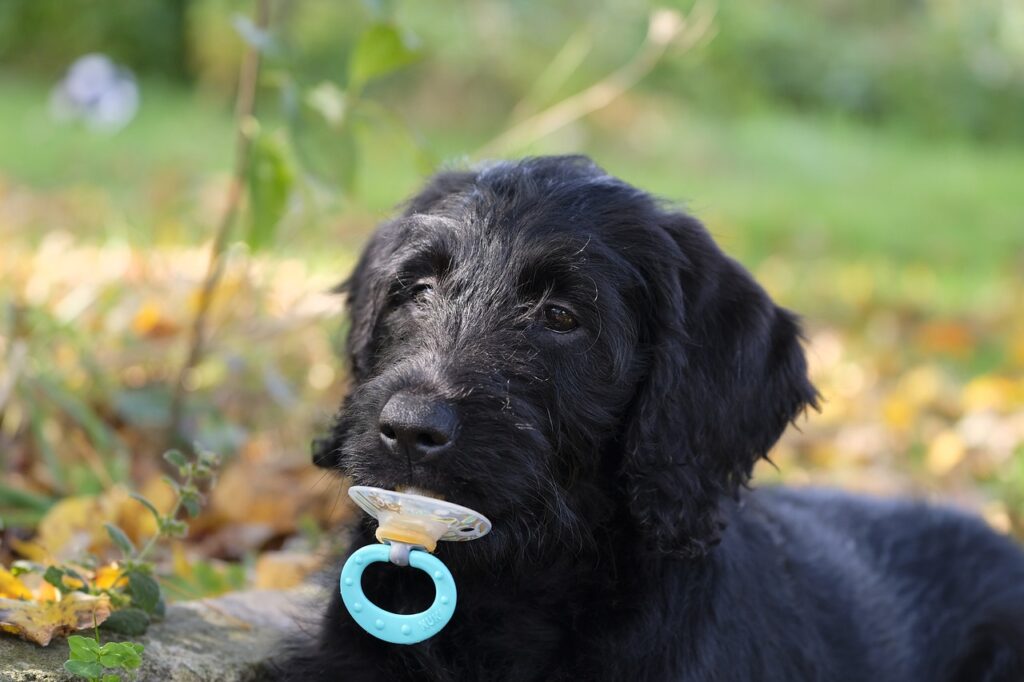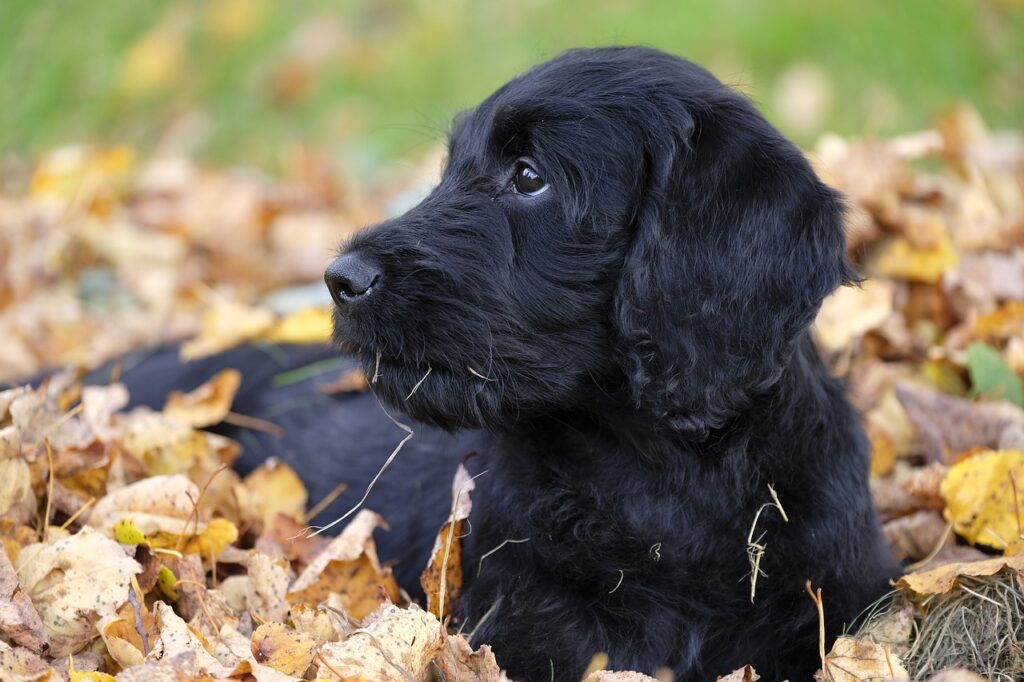
Hey there, Labradoodle lovers! Are you ready to embark on a tail-wagging adventure of finding the perfect kennel for your furry best friend?
Imagine a kennel that’s not just a space for your pup to snooze, but a haven where they feel safe, loved, and utterly content. Whether you’re a new Labradoodle parent or a seasoned pro, this guide is packed with tips, tricks, and doodle-approved advice.
So, grab your Labradoodle (they’re the real critics here!), a comfy seat, and let’s sniff our way through the journey of creating the perfect kennel.
The Blueprint of an Ideal Labradoodle Haven
When it comes to designing the ultimate Labradoodle haven, understanding your furry friend’s needs is key. The perfect kennel is more than just a place for your doodle to hang its hat – it’s a retreat that provides comfort, safety, and a sense of belonging.
Essentials of a Perfect Labradoodle Kennel
- Spacious Yet Cozy: Labradoodles come in various sizes, so the kennel size should match. It should be spacious enough for them to stand, turn around, and stretch out comfortably. However, it shouldn’t be too large; Labradoodles often feel more secure in a cozier space that feels like their own den.
- Ventilation and Light: Good air circulation is essential to keep the kennel fresh and prevent the buildup of dampness and odors. Natural light is also important, but direct sunlight should be avoided to prevent overheating.
- Elevated Bedding: An elevated bed inside the kennel will keep your Labradoodle off the ground, protecting them from cold or damp floors. The bedding should be soft yet durable, and easy to clean.
- Personal Touch: Adding familiar toys and blankets can make the kennel feel more inviting and comforting to your Labradoodle.
Space Requirements and Comfort Considerations

- Room to Grow: If you’re kenneling a Labradoodle puppy, remember they grow quickly. Plan for a kennel that accommodates their adult size.
- Temperature Control: Ensure the kennel area maintains a comfortable temperature. Labradoodles are sensitive to extreme temperatures.
- Quiet Corner: Place the kennel in a low-traffic area to minimize stress and disturbance, but still within a part of your home where they can feel like they’re part of the family.
Safety First: Ensuring Your Labradoodle’s Kennel is a Safe Zone
Creating a safe space is paramount in kennel design. The safety of your Labradoodle depends on the materials used and the kennel’s overall construction.
- Non-Toxic Materials: The kennel should be made of non-toxic materials. Labradoodles can be chewers, especially when they’re young, so ensure all parts of the kennel are safe if ingested.
- Sturdy Build: A well-constructed kennel will prevent any accidental collapse or injury. Check for sturdiness and stability, particularly in outdoor kennels.
- Smooth Edges: Ensure the kennel doesn’t have sharp edges or points where your Labradoodle could hurt themselves.
Avoiding Common Hazards in Kennel Design
- Chew-Proof: Electrical cords, sharp objects, or small ingestible parts should be kept out of reach.
- Escape-Proof: The kennel should be secure enough to prevent your clever doodle from escaping.
- Weather-Proofing: For outdoor kennels, ensure they are waterproof and provide adequate shelter from the elements.
Comfort Meets Functionality: Balancing Coziness and Practicality

Designing a kennel for your Labradoodle that combines comfort with practicality is essential for their well-being and your convenience. The right bedding, accessories, ventilation, and lighting play a crucial role in creating a pleasant environment for your furry companion.
Choosing Bedding and Accessories for Comfort and Ease of Cleaning
- Selecting the Right Bedding: The ideal bedding for a Labradoodle should be soft yet supportive. Orthopedic beds are a great choice, especially for older dogs with joint issues. The bedding material should be hypoallergenic and resistant to fleas and ticks.
- Easy-to-Clean Materials: Choose bedding that’s machine washable and quick to dry. Removable covers are a practical choice, allowing for regular washing without the hassle.
- Comforting Accessories: Add a personal touch with your Labradoodle’s favorite toys and a durable chew bone. This not only makes the kennel more inviting but also provides mental stimulation.
Assessing Ventilation, Temperature Control, and Lighting
- Proper Ventilation: Good airflow is crucial to prevent mold and to keep the kennel smelling fresh. Ensure the kennel has ventilation openings that are secure yet effective.
- Temperature Control: The kennel should be neither too hot nor too cold. Consider installing a fan for the warmer months and proper insulation for the colder seasons.
- Adequate Lighting: Natural light is best, but avoid placing the kennel in direct sunlight. Soft artificial lighting can be used to provide a calm atmosphere during the evenings.
The Great Outdoors: Inside Tips on Outdoor Kennels

For those considering an outdoor kennel for their Labradoodle, understanding the pros and cons, as well as necessary features like weatherproofing and security, is key.
Pros:
- More Space: Outdoor kennels can offer more space for your Labradoodle to move around.
- Natural Environment: They allow your dog to be closer to nature, which can be stimulating and enjoyable.
Cons:
- Weather Vulnerability: Outdoor conditions can be harsh, from extreme heat to cold.
- Less Human Interaction: Dogs in outdoor kennels might not receive as much interaction with their family, which is vital for Labradoodles.
Weatherproofing and Security Features
- Weatherproofing: Ensure the kennel is waterproof and provides shade. Good insulation for colder weather and proper ventilation for hot days are essential.
- Security Features: The kennel should be escape-proof and safe from potential predators. Lockable gates and secure fencing are important, especially in rural areas.
- Comfort in the Outdoors: Even in an outdoor kennel, comfort shouldn’t be compromised. Provide a weather-resistant bed and ensure there is always access to fresh water.
Selecting the Best Location for the Kennel
- Natural Light: A spot with access to natural light is ideal. However, avoid direct sunlight which can overheat the kennel.
- Social Inclusion: Labradoodles thrive on companionship, so a location where they can observe family life is important.
- Accessibility: Ensure the kennel is easily accessible for regular cleaning and interaction with your Labradoodle. It should be simple to open and enter or reach inside for petting and playing.
Designating an area near the kennel for play and exercise is essential for your Labradoodle’s physical and mental well-being. Create a space with toys and a comfortable mat, ensuring your Labradoodle gets regular exercise, both indoors and outdoors.
This could involve structured playtime within the home or outdoor walks. To keep their minds engaged, select toys that stimulate their intellect and satisfy their chewing instincts, and regularly rotate these toys to maintain their interest.
Routine Cleaning and Maintenance of the Kennel
- Regular Cleaning: Clean the kennel regularly with pet-safe cleaning products. Bedding should be washed frequently to prevent odors and bacteria buildup.
- Maintenance Checks: Regularly inspect the kennel for any signs of wear or damage that could harm your pet or reduce the kennel’s functionality.
Tip: Use odor-neutralizing sprays or cleaners that are specifically designed for pet areas. Good ventilation also helps in managing odors.
From Doodles to Zzz’s: Ensuring Restful Kennel Time
Creating a sleep-friendly environment within the kennel is equally important for your Labradoodle’s health and well-being. Ensure the bedding is comfortable and supports their joints, with options like memory foam beds being ideal.
Maintaining a peaceful atmosphere around the kennel, especially during sleep times, is crucial. You might consider using a kennel cover to create a den-like environment that encourages relaxation and sleep.
Understanding your Labradoodle’s unique sleep patterns and needs, including a mix of deep sleep and naps, is vital in establishing a routine that includes quiet time in the kennel.
Creating a sleep-friendly environment in the kennel is essential for your Labradoodle’s health and well-being.
Kennel Training 101: Positive Reinforcement Wins
Training your Labradoodle to view the kennel as a safe and happy space is crucial. The key is positive reinforcement.
Kennel training your Labradoodle to view the kennel as a safe and happy place is a critical part of their development. Begin by gradually introducing them to the kennel and use treats, toys, and praise to create positive associations.
Feeding your Labradoodle in their kennel can also help build this positive relationship. Start with short sessions in the kennel and gradually increase the duration, maintaining a regular schedule and including comforting items like their favorite toys or a piece of your clothing.
For working dog parents, managing kennel time is a balancing act between ensuring your Labradoodle gets enough exercise before kennel time and providing safe entertainment while you’re away.
Spend quality time with your Labradoodle when you’re home to balance the time they spend alone. If possible, come home during breaks or arrange for someone to check in on them.
Addressing common kennel-related issues like barking or whining and providing appropriate chew toys can prevent these behaviors from becoming problematic. If issues persist, seeking professional help from a dog trainer can be beneficial.
As your Labradoodle grows, their kennel needs will evolve. Adjust the size of the kennel to accommodate their growth and change the bedding and toys to suit their changing preferences.
Adapt your training methods and routines to match your Labradoodle’s maturity level. Paying attention to your dog’s behavior can provide valuable insights into their feelings about their kennel.
Look for signs of relaxation and willingness to enter the kennel, and make adjustments based on these behavioral cues.
Conclusion
In conclusion, the right approach to kennel training and management can significantly impact your Labradoodle’s perception of their kennel.
Ensuring the kennel’s size and location are suitable for your Labradoodle’s needs and using positive training techniques are crucial in creating a safe haven that contributes to their overall happiness and well-being.
Good luck!

